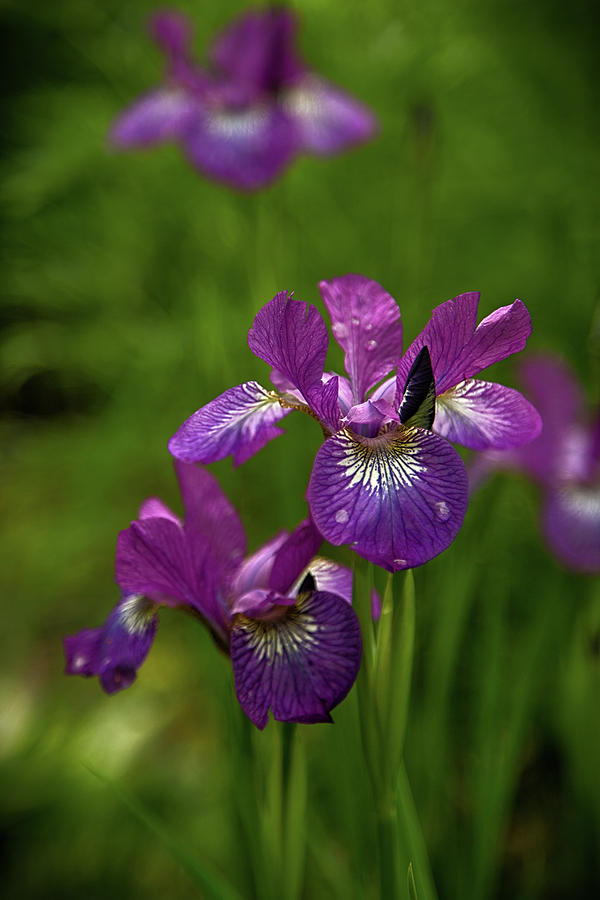

In autumn, the leaves will begin to dry up, brown, and wither as all the stored nutrients move down into the root system. This foliage photosynthesizes and collects nutrients throughout the growing season. Their leaves are slender and more grass-like. Their flowers are smaller than bearded iris and lack the fuzzy beard of their taller cousins. Take care, however, not to cut back the foliage. Siberian iris are known as beardless iris. For best plant appearance when removing spent Siberian iris blooms, cut the whole flower stalk back to the plant crown immediately after the flowers fade. If you enjoy deadheading plants and prefer a pristine garden, deadheading Siberian iris blooms will not harm the plant either. Due to this, they can be paired with plants that flush out later, such as daylily, tall phlox, or salvia for successive blooms. They can tolerate chalk, clay, loamy, or sandy soil but prefer well-draining loam soil. Wilted, spent blooms of Siberian iris can be removed to improve the tidy appearance, but deadheading spent flowers is purely cosmetic and has no actual effect on the health or vigor of the plants. Siberian irises are more adaptable and can grow in a variety of soil types. Removing Siberian iris flowers once they’ve wilted will not cause the plants to rebloom. Though the foliage will last a long time, Siberian irises only bloom once. Siberian Irises can be planted anytime from spring to fall, with foliage forming in the autumn and taller growth emerging in the winter.

They do not brown, scorch, wither, or flop after blooming like other irises often do. One of the notable characteristics is that their stems and foliage remain green and erect after the blooms fade. They bloom along with other spring perennials such as allium, peony, bearded iris, and foxglove. Best with consistent moisture from the onset of spring growth until. In too much shade, plants tend to produce fewer flowers and foliage tends to flop. Blooms form from spring to early summer on strong, erect stems above stiff, sword-like foliage. Siberian iris is an adaptable plant which tolerates a wide range of soils, including boggy ones, but will generally perform well in average garden soils. Siberian iris plants naturalize, forming clumps or colonies of 2 to 3 foot (61-91 cm.) tall plants in zones 3 through 9. Siberian irises are known as a low to no maintenance plant, yet here at Gardening Know How, we are flooded with questions like “should you deadhead Siberian iris?” and “does Siberian iris need deadheading?” Click on this article for answers to those questions, as well as tips on removing Siberian iris flowers. History and Traditions The genus Iris shares the same name as the mythical Greek goddess of the rainbow who ruled over both sea and sky. With beautiful blooms in multiple colors, their dramatic but tough sword-like foliage, and excellent disease and pest resistance, there is no mystery why iris lovers are drawn to them. Siberian iris ( Iris sibirica ), from the Iridaceae family, is an example of a low maintenance, well-adapted plant that is perfectly suited for rain gardens, as well as other locations throughout the landscape. Known as the most adaptable, easy-to-grow iris plants, Siberian irises are finding their way into more and more gardens these days.


 0 kommentar(er)
0 kommentar(er)
